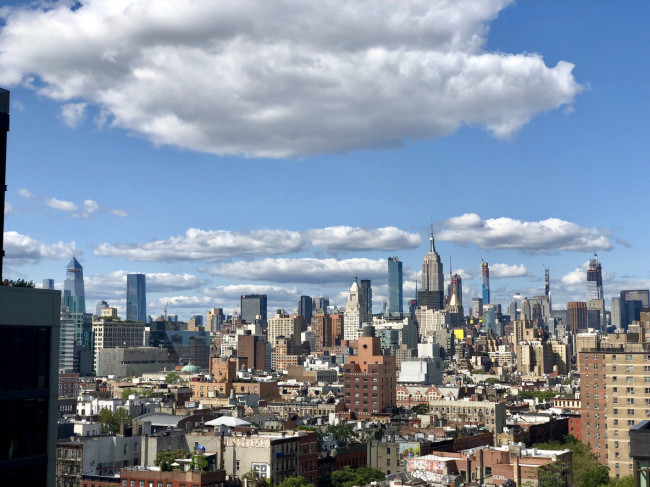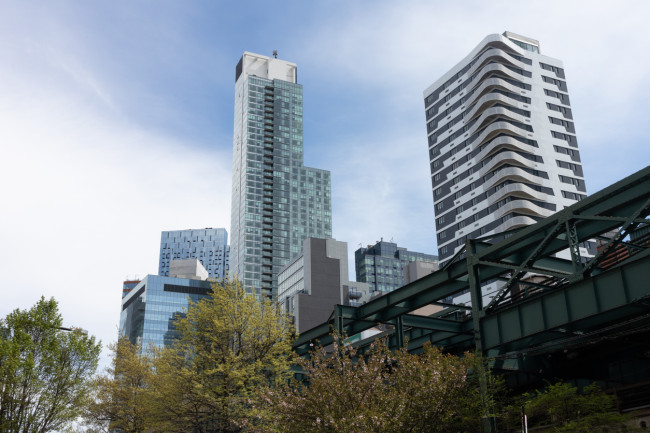Brooklyn's median price holds steady, despite sharp fall in the number of sales

In the third quarter, Brooklyn’s median sales price was $790,000—the same as a year ago, according to the Elliman Report.
iStock
The median price for Brooklyn co-ops, condos, and one-to-three family houses seems to defy gravity. While the number of sales in the borough fell dramatically recently, prices are holding firm.
In the third quarter of this year—when the number of sales fell 43 percent compared to the third quarter of 2019, Brooklyn’s median sales price was $790,000—the same as a year ago, according to the Elliman Report for the third quarter for Brooklyn, Queens, and Riverdale.
The number of sales, however, fell at the largest year-over-year rate in more than 11 years, according to the report.
The flat median price “is somewhat astounding,” says Jonathan Miller, president and CEO of appraisal firm Miller Samuel and author of the report. He points out that in the prior five quarters, Brooklyn’s median price has been the highest or third-highest on record.
A similar pattern played out in Manhattan in the third quarter: Sales plunged by 46.3 percent, while the median sales price for co-ops was up slightly and for condos, it leaped nearly 19 percent year over year.
Brooklyn’s Teflon prices are an indication of stability, he says, which is good news for sellers, and somewhat good news for buyers as well. “At least records are not being set every quarter,” Miller says.
Unlike Manhattan, however, the numbers of listings on the market in Brooklyn was way down in the third quarter compared to the year-ago quarter: 43.1 percent. It was the largest annual decline in listings for the borough in three and a half years.
Sales activity was down sharply in Queens during the third quarter as well, falling for the second straight quarter. It was also the second-largest slump year over year in more than nine years.
The median sales price for Queens slipped nominally year over year (.2 percent) to $599,000. It was the first decline in 18 months. Listings, however, increased to the highest level in more than seven years.
Some of the decline in Brooklyn inventory could be attributed to sellers deciding to put off making a move for now, for lack of buying options, Miller says.
That may be especially true if sellers are thinking of heading to the burbs.
The suburban markets of Westchester, Putnam, and Dutchess County have been seeing a combination of rising prices, bidding wars, and low supply—mirroring other suburban markets nationally—but their blistering pace of sales is now slowing, according to Miller, who also authored third quarter sales market reports on these suburban markets for the Elliman Report.
The third quarter median sales price in Westchester, $680,000, was the highest median tracked in more than 28 years, he says. Average prices are seeing records as well.
“One concern as sales activity in the suburbs plateaus is affordability,” Miller says. With median prices up 20 percent in the suburbs—it removes the advantage of the suburbs over the city: more space for a lower price, he says.
“There’s a limit to how long this trend can go on before it impacts the city,” Miller.
Other market reports
Corcoran released its third quarter sales report for Brooklyn, which notes that “by the middle of the quarter, the flurry of fresh new listings and a highly negotiable marketplace unlocked the pent-up demand built over the last few months.”
The report points out that last year’s rush to beat the new mansion and transfer tax in the second quarter skewed third quarter results. “As a result, this quarter’s overall median and average annual gains, though minimal, are overstated,” the report says.
Compass' third quarter market report for Brooklyn finds that South Brooklyn had the greatest number of sales. North Brooklyn saw the largest decrease in average price, and Northwest Brooklyn saw the largest increase. Houses continued to see higher prices.
Brown Harris Stevens, in its third quarter market report for Brooklyn, observes that about one-third of closings had their contracts signed before lockdown, a much lower percentage than Manhattan.
A third-quarter market report from Brown Harris Stevens Development Marketing finds buyers in Brooklyn are looking to “trade up for larger units, get more space for their money, and hone in on farther out neighborhoods now that commuting is not as high on the priority list,” says Stephen Kliegerman, president of BHSDM.
You Might Also Like


























